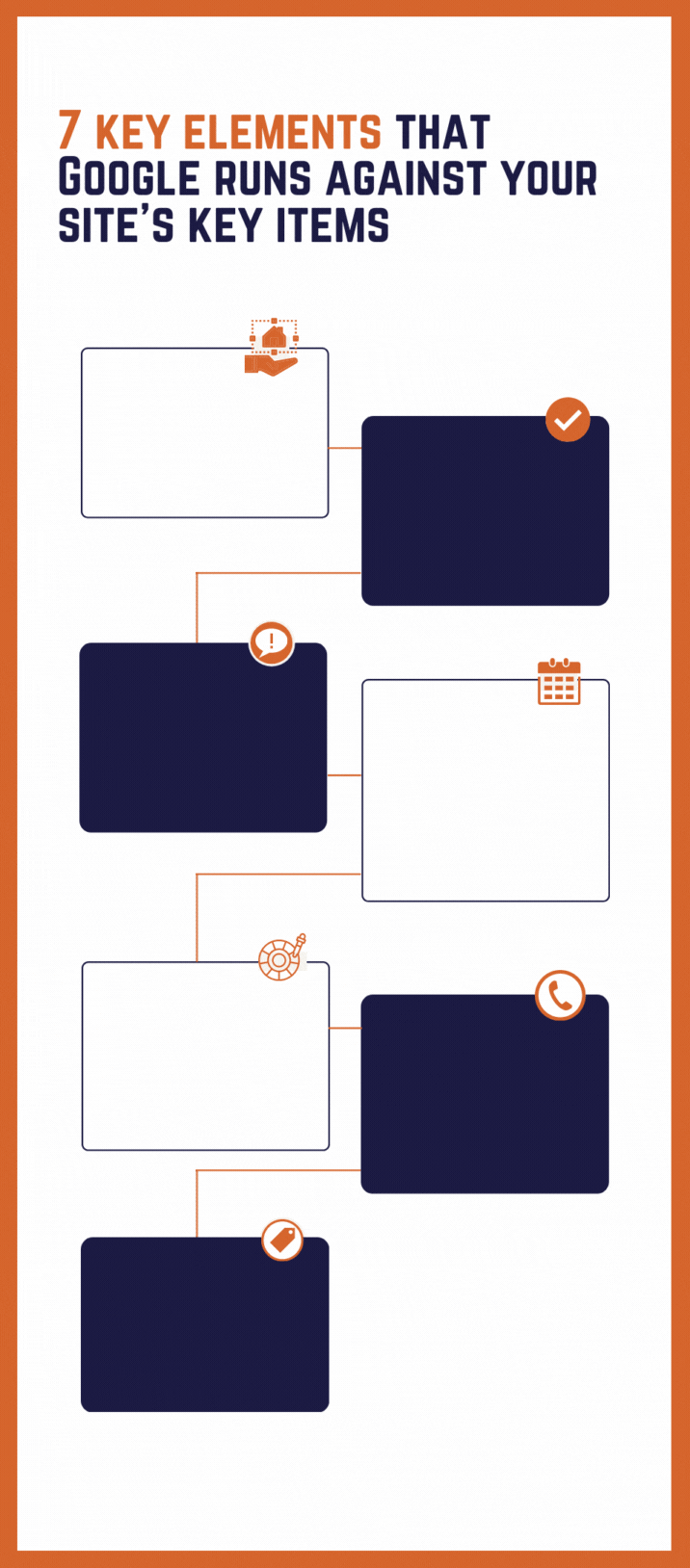As you look to improve your business’ website SEO, it’s important to understand what your site is being tested on, so that you know where to improve your website. As Google indexes site every month, there are a number of items, a checklist if you will, that the bots will scan your website for. These are run through what are referred to as Google’s algorithms.
Google uses these algorithms to determine everything from site quality, authority, content quality and more all in order to deliver the best and most qualified search results to internet users conducting the search. Consider these as a rubric, just like in school: the more of these you have checked off, the more likely you are to rank higher with Google.

With that in mind, here are seven key elements that Google runs against your site’s key items every month. Every business executive should be aware of on their websites to improve their SEO.
7 key Elements that google Runs against your site’s key items every month
1. Common Tasks on the Home Page
Google is looking for quick user tasks, most popular topics and fast loading pages. Built in tools to save the user time. Prioritizes easy to use forms
2. Simple and Clear Navigation
The Hamburger menu is considered mobile friendly navigation and should include no more than 5-7 items in the drop down list. It needs to be one click to get where the user wants to go.
3. Avoid Pop Ups
Google demotes you if you’re not prioritizing the user’s experience. Don’t focus on self-service on the home page. Focus on being a tool at the consumer’s fingertips. Pop-ups not only literally block Google from being able to crawl your website, but they deter readers as well if they’re being asked for something immediately as they enter your site.
4. Use Easy Forms and Calendar Widgets
When assessing your site, Google is looking for easy-to-use tools, like calendar widgets, drop downs and simple, fast-to-fill forms. These prioritise the user and the ease of using your site.
5. Web Friendly Design and Colors
As you look to optimize your website, you want to be aware of the visual aspects of your website. Choose web-friendly designs and colors for both easier use of your website and faster loading speeds. For example, hexadecimal color codes will load faster than image files being used as backgrounds.
6. Responsive Design Across Device Types
Google is looking for various size formats, responsive coding, and prioritized (top down) content. How does the desktop version of your site look compared to the mobile version? By and large, they should look very similar. If they look too different, Google can even demote your site.
7. Effective Title and Description Tags
Make sure that you avoid any bloated code. When Google's spider crawls your site and looks at the code, if the code is too dense and unstructured, it actually leaves the site, either pushing your site further down the rankings or not even indexing your site and leaving it out of search rankings all together.

While your code is not visible to the average user, the way it’s presented matters. Your code should be organized. Beware of free sites, like Wix and Squarespace. While easy to use and set up your site with, the trade off with these free or low-cost hosting services is that they often contain a lot of bloated code.
If you work with us to improve your website and follow our methodology, you can start to see results in sixty days.
Reach out today to start improving your Google search rankings.

